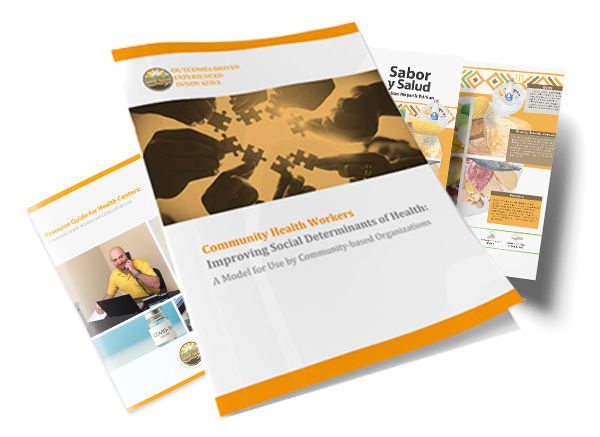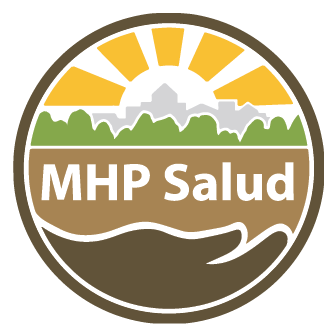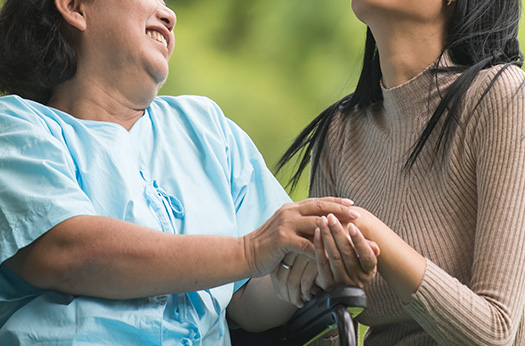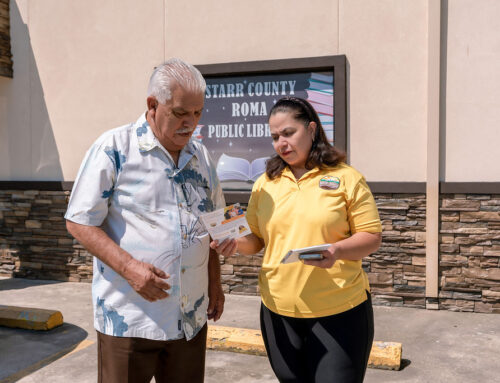Ageism: 101
Published October 2022 | Read this article in Spanish.
- Ageism is an ongoing social problem affecting older adults, including Hispanic/Latinos.
- Including older adults in decisions can help combat ageism.
- Providers, including CHWs, can do self-checks to ensure they’re not unintentionally engaging in ageism.
What is ageism?
The World Health Organization (WHO) refers to ageism as “the forms of stereotypes (how we think), prejudice (how we feel) and discrimination (how we act) towards others or oneself based on age.”1 Ageism stereotypes and myths can impact an older adult’s overall well-being.
Why does ageism matter?
Ageism is an ongoing social problem that older Americans face in the aging process. Ageism, or myths about aging, creates barriers for older adults that are trying to age with dignity. As Americans live longer and healthier lives, ensuring equal access to resources that support healthy aging is important.
Our older adult population 65 and older in the U.S. is estimated to reach 90 million by 2050!1 Our older minority population is estimated to grow 160% and older Latinos are expected to account for the largest increase of the population.2
Older adults have an important role in combating ageism. They can provide valuable feedback to help address the challenges they face in the workforce, their communities, social relations, and healthcare. Ensuring that older adults are engaged and have an active voice in decisions that affect them supports aging with dignity.
1 in 5 Americans are projected to be 65 years old and over by 2030.
There are 4 types of ageism:4
- Personal Ageism – Saying things like “you’re too old to drive a car,” physical abuse, and negative stereotypes about older adults.
- Institutional and Cultural Ageism – Limiting options at work for older adults leading them to retire, excluding them from clinical trials, and devaluing older adults in cost-benefit analyses.
- Intentional Ageism – Financial scams targeting older adults, marketing material that focuses on older adult stereotypes, denying employment or unfair hiring practices based on age.
- Unintentional Ageism – Overlooking the needs of older adults in emergency planning or lacking the structural needs of older adults in the environment (ramps, elevators, handrails).
The National Hispanic Council on Aging (NHCOA) recently shared common ageism myths about older adults.
Below are the top 6 responses:5
- Older adults are “Useless”
- Older adults are “Slow”
- Aging is the “End of Life”
- Aging is “Negative”
- “Cannot Work” once you age
- Older adults can no longer “contribute”
What does ageism look like within Hispanic/Latino communities?
A traditional cultural value among the Hispanic/Latino community, known as familismo, puts the family’s needs above individual needs and can lead to unintentional ageism. Familismo in the Hispanic/Latino community may be expressed through being protective and caring towards older adults.
As a caregiver, one may be faced with deciding what is best for their loved one. For example, they may need to plan medical visits, create personal and healthcare routines, and make important decisions about health, nutrition, and sometimes finances. While caregivers may have their loved one’s best interest in mind, they often make decisions without the consent of the person they’re caring for. It can be seen as a way to “protect them” from making tough decisions. Ageism may be affecting the care they provide, and it is important to recognize that older adults should be included in decision-making.
We encourage individuals that have an active role in the lives of older adults to check their biases about aging. While there is much to learn about ageism, we know it contributes to “discrimination against older people because of negative and inaccurate stereotypes/myths.”6 By creating awareness of what ageism is and what it can look like in our role with older adults, we can help promote healthy aging in our communities.
How can healthcare providers make sure they’re not engaging in ageism?
We can support positive physical and mental health outcomes among older adults by working together with them, their caregivers, healthcare professionals and other trusted members of their communities. Because Community Health Workers (CHWs) are active members of their communities, they often embrace cultural practices that may lead to unintentional ageism. A good practice for healthcare providers, including CHWs, to ensure that they support positive aging, is to do a self-check.7 See below for some examples from the Reframing Aging guide on how to check ourselves when working with older adults:
| Instead of these words or actions | Try: |
|---|---|
| “Seniors,” “elderly,” “aging dependents,” and similar “other-ing” terms that promote stereotypes | Using more neutral (“older people/Americans”) and inclusive (“we” and “us”) terms |
| “Choice,” “planning,” “control,” and other individual determinants of aging outcomes | Emphasizing how to improve social contexts: “Let’s find creative solutions to ensure we can all thrive as we age.” |
| Assuming that only the caretaker is involved in making the decisions. | If unsure of who is the authorized representative, ask the participant and educate them on the consent process for providing services. |
As trusted members of their communities, CHWs are able to educate others on what ageism is and why it is important to support positive aging experiences.
MHP Salud can help other organizations strengthen their work with older adults through additional training and technical assistance opportunities.
If you are interested in learning more about the value of CHWs, contact us for more information.
- https://www.who.int/news-room/questions-and-answers/item/ageing-ageism
- https://www.ruralhealthinfo.org/toolkits/aging/1/demographics
- https://www.apa.org/pi/aging/resources/guides/older
- https://aging.columbia.edu/sites/default/files/Ageism_in_America.pdf
- https://diverseelders.org/wp-content/uploads/2018/10/2018-Status-of-Hispanic-Older-Adults.pdf
- https://www.reframingaging.org/Portals/GSA-RA/images/RAI%20Intro%20Infographic%202021.pdf?ver=0-AwevO45NHd7dE_YTdwYg%3d%3d
- https://www.reframingaging.org/Portals/GSA-RA/QuickStartGuide.pdf?ver=_QHG8_uKL6HNr0mIEffDZg%3d%3d
HRSA Disclaimer
This project was supported by the Administration for Community Living (ACL), U.S. Department of Health and Human Services (HHS) as part of a financial assistance award totaling $213,112 with 75 percentage funded by ACL/HHS and $73,094 amount and 25 percentage funded by non-governmental source(s). The contents are those of the author(s) and do not necessarily represent the official views of, nor are an endorsement, by ACL/HHS, or the U.S. Government.
Blog Topics
This series of worksheets and accompanying videos was created in collaboration with our partners at Trualta. They are designed for caregivers to identify how cultural values and norms affect their caregiving, help identify which values are important to them, and ways to implement those values in their daily lives as caregivers.








